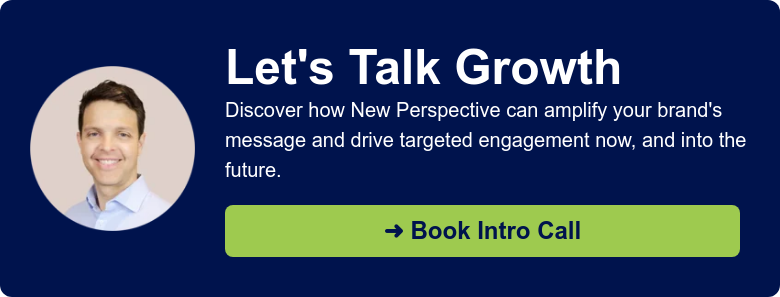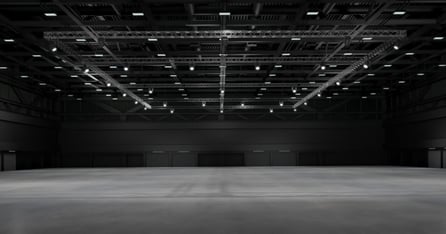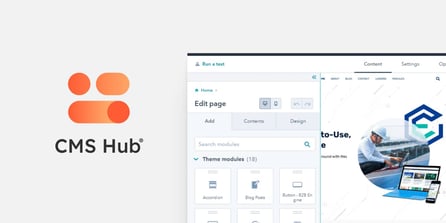How to Max Out ROI at Your Next Trade Show

As the sales or marketing leader at your company, how frustrating (not to mention career-threatening) it is to review the financial outlay (travel, entertainment, booth construction, space rental, staff time… the list goes on) for your latest trade show appearance? Do you get anxious when analyzing the business-building value your company actually realized after attending a big show?
This is not us saying that the trade show is a relic and must be done away with. Perish the thought — trade shows are the very lifeblood of many companies, a chance to attract new business and reconnect with valued and trusted customers at an offsite location. We’re just saying there’s a better way to do trade shows that will realize a better return on your company’s time and investment.
Big Money, Uncertain Return
Analyze your company’s investment in recent trade show activity ($25,000+ a pop?) and look at the inconclusive connection between leads and closed deals generated.
The pandemic has only exacerbated the doubts and second thoughts attached to traditional trade show participation. A year of canceled events, replacement online events (which may have underwhelmed), and, as things get back to normal, a scenario where shows will be held with no expectation of who, or how many prospects, are actually going to show up.
Again, we firmly believe that trade shows aren’t going anywhere. But you do need to give yourself a fighting chance at success. Many of the tactics that work so effectively in day-to-day digital customer engagement can be adapted for use right down to the trade show floor level to ensure that you are optimizing your presence at future industry events.
These are best practice digital strategies — and they’re not hard to execute, whether your presence is at a traditional face-to-face offsite event as life gets back to normal or whether you are looking to make a mark at an online trade show, a recent example of which I provide below.
A Tale of Two Trade Shows
Let’s imagine a scenario where your team has traveled offsite to a town in the middle of the desert favored by gamblers — it could be any town. It’s a three-day show, you have a booth, you have staff on hand to mingle and sell, and you have a one-hour keynote presentation designed to make the crowd of 300 attendees forget all about the Cirque du Soleil performance they saw last night.
How do you tweak your approach for maximum engagement before, during, and after your presentation?
First, Let’s Talk About the Old-School Approach
The Field of Play
We have a sales quota, it looks like we are off our number for the year so we are coming to the desert loaded for bear and prepared to sell our asses off — we have no choice.
We have thousands of business cards to hand out and if someone appears to even have the hint of a pulse, they are going to get a drink bought for them. We are energized (thank you Red Bull), motivated, and ready to take on and smash any sales objections and roadblocks that are thrown our way.
Organization
The show organizers have promised names and titles of everyone who attends our presentation (hardly a foolproof method) and these poor souls will be ground zero for our in-show and post-show outreach efforts. We will dominate! Our presentation has been emailed to attendees and for those who come to our booth, there will be a chance to win an iPad or, at the very least, walk away with a golf ball with our company logo on it. If we run out of golf balls, we have pens and a bunch of fidget spinners from the show several years ago when fidget spinners were a thing.
Approach
With no central coordination in place, we find that our salespeople are having conversations with the same target customers, which is frustrating on both sides. We have limited insight into the business challenges and concerns that our targets are experiencing, a situation that is only exacerbated by our pathological need to talk all about us and how our solution is far better than anything our competitors are offering. This approach leaves limited time to talk about customer needs as we attempt, without success, to close deals on the trade show floor.
The Aftermath
The presentation went well with no hiccups in our technology. We are dismayed to learn that every other company on the show floor is giving away iPads — and worse yet, not only was one of our key competitors giving away three-packs of golf balls, they regularly walked by our booth and openly mocked our fidget spinners. We don’t get as many prospects to our booth due to its poor location, and a problem with the scanning technology used by the show organizers meant we only get twenty-five names and titles for people who attended our presentation.
Did we get our money’s worth? Who knows?
Will we be back next year?
Do we have a choice?
Now Let’s Take a New-School Approach
The Field of Play
For the next 72 hours, we are in charge of our destiny — and will extract maximum value from this show. We will leave nothing to chance.
Our sales team has talking points but is not scripted. We are not ‘selling hard,’ we are ‘selling smart’ to those prospects who see the value in what we are presenting to them. We want to be perceived as a knowledgeable, helpful resource; the kind of team that prospects want to spend time with because of the industry intelligence we can share and the competitive advantage they can gain by being in our orbit.
Organization
At the beginning of our presentation, we will tell our crowd of 300 that if they download the presentation that we are about to see from our source (versus what has been provided by the trade show organizer) they will be able to access special content and insight available to them exclusively as attendees to our presentation.
Between a third and a half of the crowd will do this at the top of the presentation. We will keep on offering additional valuable content throughout — so that by the end of the presentation, we will have captured name, contact, and key industry profile info for about 75% of those in the room.
As additional ‘bundles of content’ are dropped and accessed by the audience, our business development team can connect them directly via text and/or Twitter in real-time, and see if there is an opportunity to meet or follow up to answer any questions
We also use a form fill for attendees that solicits specific pain points, questions arising from the presentation, and business challenges they are trying to overcome for which our product service might be a good solution. This means that these leads are handed to our sales team infused with real insight and an understanding of the business issue that needs to be addressed.
The discussion naturally and quickly evolves to a summary and demonstrated understanding of the needs of the customer versus a prefabricated download about us. Attendees are invited to come to our booth to receive additional valuable content based on their expressed interest.
If the topics they are interested in were not covered in our presentation, we can ensure that they have access to the information they need, provided by our team, either in real-time or shortly after the conclusion of the show.
Approach
Again, our team is not there to sell. We know it’s unlikely that a deal is going to get written at the show. We are there as a resource simply looking to help. The selling can come later — once we feel we have a solution that matches the customer’s needs, and we have customers we are keen to do business with. Initial contact with these prospects will be introductory in nature and relatively brief — 15-minute meetings to confirm business challenges, align on industry trends, and to put a face to a name for future engagement.
The Aftermath
Don’t forget to leverage digital to leave an ongoing impression. These valuable prospects are now known to us. We understand their challenges and concerns and we can put them into a nurture sequence that is consistent with what we know about their business and the industry which they are in. Our CRM does much of the heavy lifting here, as new relevant content and industry insights can be shared with the prospect as they move through the purchase funnel.
Case Study: A Cleantech Company Has Lead Conversion Results Far Above the Norm
We mentioned the impact that these kinds of tactics can have on an online trade show event. Consider the case of a cleantech company we work with. When they sent an email sequence to event attendees, they say amazing results:
- Open rate: 71%
- Click rate: 100%
- Reply rate: 27%
For anyone who has done email marketing in the past, just let these numbers sink in for a moment.
Further, for those who did not attend the live session, the open rate was 63%, click rate 99%, and the reply rate was 14%. Keep in mind that the average for these kinds of campaigns is an open rate between 15-25% and a click rate of 2.5%.
Clearly, the combination of proactive digital engagement serving the right kind of content in a measured, thoughtful way can have a significant impact on the future of your business. Can you imagine being the salesperson who was handed these leads? And how are you feeling about your next direct mail campaign?
4 Steps to a Better Trade Show
The potential to make future trade shows your best and most reliable source of new business is easily within your reach. It’s all about having better, smarter conversations right off the bat — and taking these four steps:
- Create presentation materials with specific, unambiguous discussion points that you can come back to and revisit and reemphasize with target prospects in follow-up discussions.
- Leverage great digital content and additional assets to support those discussion points, and be consistent.
- Make it easy and non-threatening to follow up. Don’t make a prospect feel they are going into a sales hot-box situation. Have short, non-salesy 10-minute conversations as a first point of contact.
- Take full advantage of your CRM system as the engine of your company’s growth. If it doesn’t do what you need it to, get a new one that does.
If you’re curious, intrigued, or simply in disbelief about this approach, feel free to get in touch with us. We’re happy to discuss how we could work with you — and help turn your next trade show into a lead generation engine. Our mission is to help your business grow — and we know this is a great way to do it.




